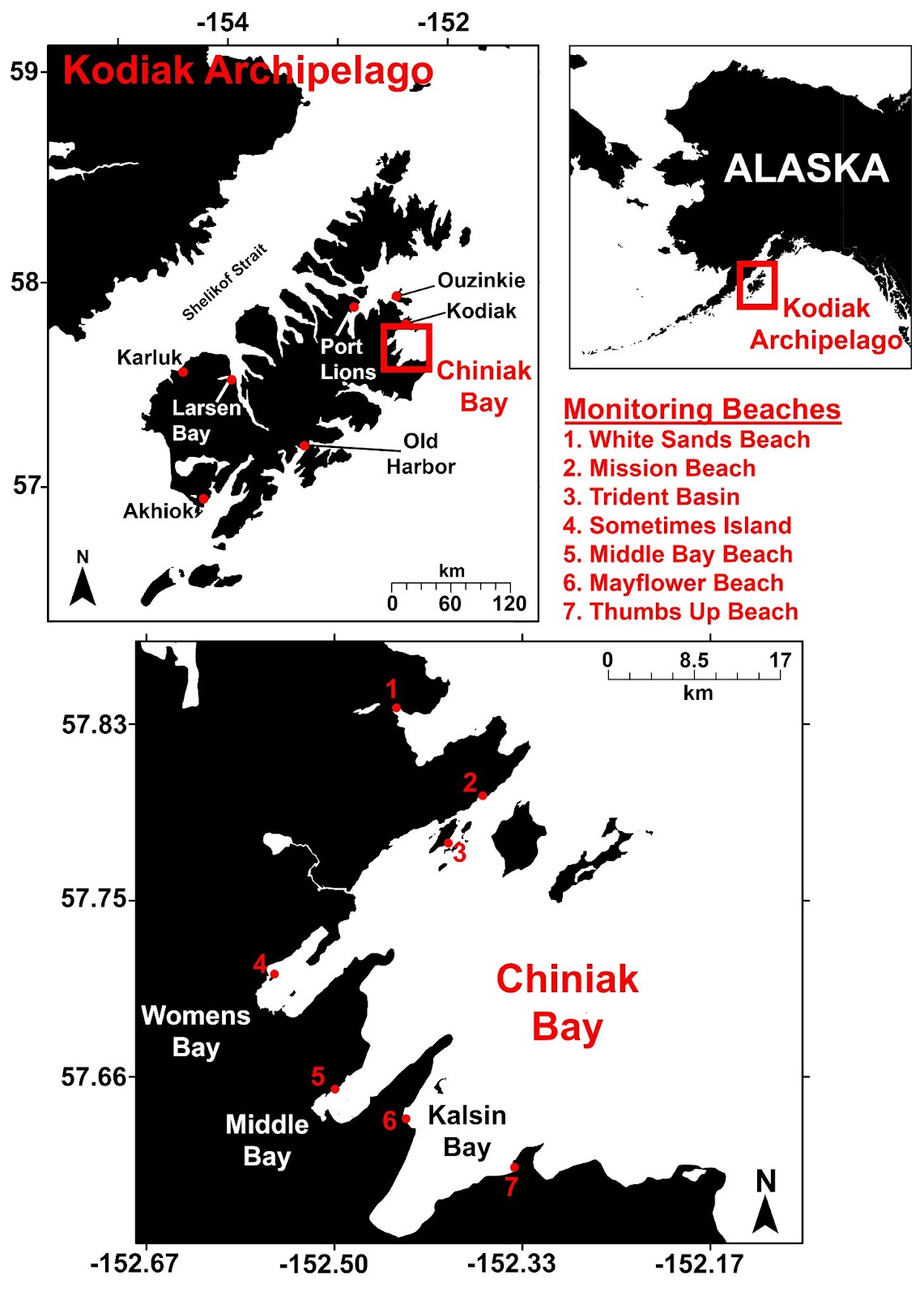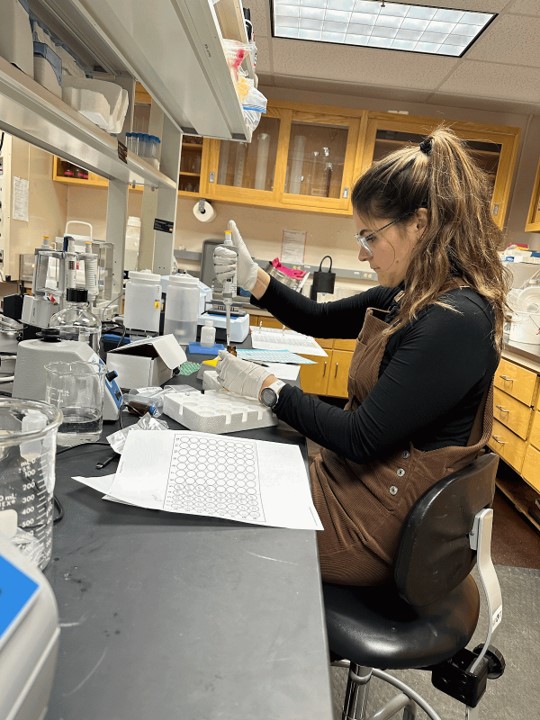
The project will enhance an existing HAB monitoring framework built by the Kodiak Area Native Association (KANA) and Alaska Sea Grant (ASG) with rapid toxin tests, new laboratory methods and capacity and training on sampling methods. This effort will help mitigate HAB toxin risks in communities of the Kodiak Archipelago, Alaska and advance HAB forecasting capabilities for the region.
Why We Care
Subsistence harvesting of seafood is a major focus of food resources and cultural practices among the Native villages in Alaska’s Kodiak Archipelago, but food security is threatened by recurrent blooms of toxic Alexandrium and Pseudo-nitzschia species. Similarly, these blooms are a major obstacle to the developing Kodiak mariculture industry.
What We Are Doing
The project team will establish a laboratory in Kodiak to provide capacity to test shellfish and seawater samples for algal toxins. The team and collaborators will also work to set up monitoring locations at traditional harvesting sites along the Kodiak Road system to help mitigate HAB risks in rural, Filipino-American, and Alaska Native communities in the City of Kodiak and greater Chiniak Bay area including those of the Sun’aq Tribe of Kodiak, the Native Village of Afognak and the Tangirnaq Native Village. The project team will facilitate safe subsistence harvesting in these communities with shellfish toxicity testing, training and improved HAB information sharing. Coordination between communities will be strengthened by building on established Alaska Sea Grant (ASG) and the Kodiak Area Native Association (KANA) efforts and with local education and training opportunities. The project will establish local capabilities for running lab-based enzyme-linked immunosorbent assay (ELISA) tests that will yield data on shellfish toxicity and support validation of a commercially available ELISA-based saxitoxin detection kit needed to broaden its utility. The team will also further refinements of lab-based.quantitative molecular methods (e.g. quantitative polymerase chain reaction (qPCR) to enable rapid, accurate detection of Alexandrium cells and cysts and use these methods to map Alexandrium cyst distributions in local waters. This work supports efforts to develop and validate an Alexandrium HAB forecast model for the Kodiak region.

This project is led by principal investigators Dr. Julie Matweyou, University of Alaska Fairbanks, Alaska Sea Grant, Kodiak Seafood and Marine Science Center. Co-investigators are Dr. Andie Wall, Kodiak Area Native Association, Jennifer McCall, SeaTox Research, Inc., and Steve Kibler, NCCOS HAB Forecasting – Beaufort Laboratory.
Unfunded collaborators are: Alexandra Meyer, Mariculture Manager, Alaska Ocean Farms, LLC, Bruce Wright, Chief Scientist, Knik Tribe of Alaska, Thomas Farrugia, HAB Coordinator AOOS, Matthew Van Daele, EPA GAP Coordinator, Sun’aq Tribe of Kodiak, Taletha Gertz, EPA GAP Coordinator. Native Village of Afognak, Anastasia Shugak, EPA GAP Coordinator, Alutiiq Tribe of Old Harbor, Fred Shanagin, EPA GAP Coordinator, Native Village of Ouzinkie, (Denise May, Tribal Administrator, Native Village of Port Lions, Teresa Carlson, EPA GAP Coordinator, Native Village of Larsen Bay, and Shannon Cellan, Lab Director, Sitka Tribe/STE-ARL
This project is supported by the NCCOS Monitoring and Event Response for Harmful Algal Blooms (MERHAB) Research Program.
Benefits of Our Work
This project will develop increased testing capacity for better mitigation of impacts from toxin-producing harmful algal blooms on human health, food security for the communities located in Alaska’s Kodiak Archipelago. The data from this effort will advance co-PIs efforts to pursue the Interstate Shellfish Sanitation Conference approval necessary to expand the utility of a commercially available PSP ELISA test and develop a new NOAA Alexandrium forecast for Kodiak. This study leverages partnerships among Tribal communities, active HAB research led by the Knik Tribe of Alaska and builds on past NCCOS and partner successes in the region.
